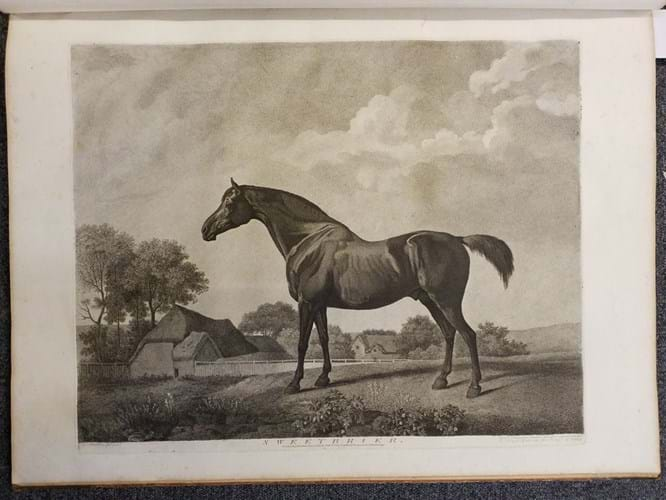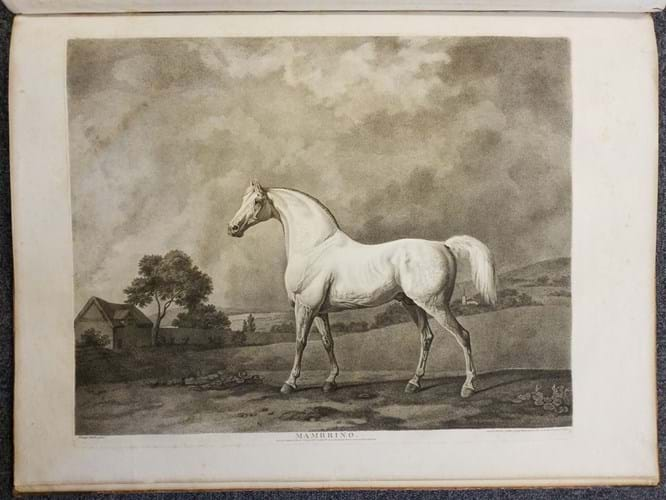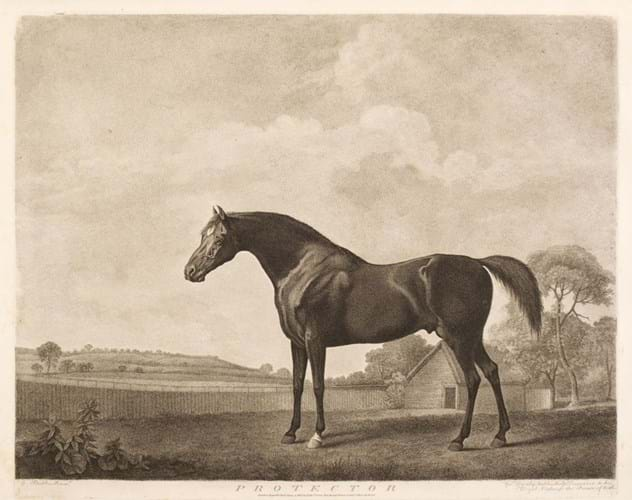
The 14 stipple engravings, first issued in 1794 as a collaboration between George Stubbs (1724-1806) and his son George Townly Stubbs (1756-1815), had been expected bring £3000-5000 at Dominic Winter in South Cerney, Gloucestershire on March 25.
The history of the Turf Gallery – probably the most famous set of racehorse prints in existence – is described in detail by Christopher Lennox-Boyd’s George Stubbs, The Complete Engraved Works (1989), and in Judy Egerton’s catalogue raisonné (2007). The plates, each measuring over 2ft (60cm) across, were used three times between 1794 and 1817. The subjects are: Gimcrack, Anvil, Dungannon, Volunteer, Sweetbrier, Sharke, Marske, Protector, Pumpkin, Sweetwilliam, Bobtail, Mambrino, Eclipse and Baronet.

‘Mambrino’ from a complete copy of George Stubbs’ ‘Turf Gallery’ of equestrian prints that sold for £30,000 at Dominic Winter.
This rare uncoloured set was from the third and final state issued after Stubbs father and son had both died. The publication line is altered to read: London, Republished June 4, 1817, by Edwd. Orme, New Bond Street, corner of Brook Street.
Bound in contemporary half brown calf over marbled boards lettered Stubb's Turf Gallery, all 14 plates were in generally clean condition save some light spotting and a short closed tear to right blank margin of Bobtail.

‘Protector’ from a complete copy of George Stubbs’ ‘Turf Gallery’ of equestrian prints that sold for £30,000 at Dominic Winter.
Stubbs is perhaps the most celebrated of all horse painters – his first published work The anatomy of the Horse was issued in 1766.





